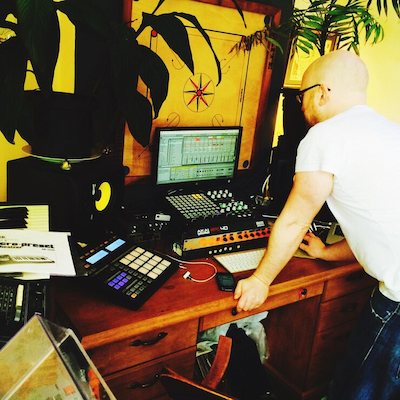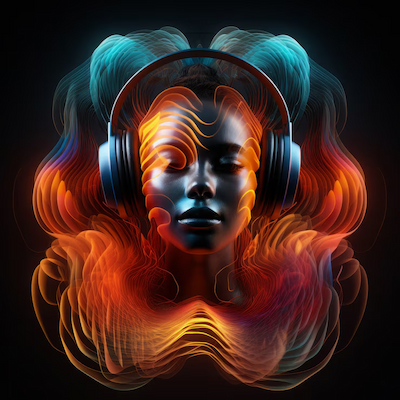
Electronic music is one of the most innovative and dynamic genres in the contemporary music scene. From its origins in the 1960s and 1970s, when the first synthesizers began to be used, to the present day, where digital technology has revolutionized how music is created, produced, and consumed, electronic music as sound art has established itself as an art form that challenges traditional conventions. This genre encompasses a wide range of styles, from techno and house to drum and bass and dubstep, each with its unique characteristics and a vibrant community of artists and fans.
The evolution of electronic music also reflects significant cultural and social changes. It has become a means of expression for many, allowing artists to explore new sounds and experiment with musical structure. Electronic music as sound art is not only a form of entertainment but also a vehicle for creativity and innovation, bringing people from different backgrounds together and promoting a culture of collaboration and sharing. In this article, we will explore how electronic music genres work, the advantages of considering it as sound art, and how it influences creative evolution.
How Electronic Music Genres Work
Electronic music genres are defined by a combination of sound elements, rhythms, and production techniques. Each genre has its own characteristics that distinguish it from others. For example, techno is known for its repetitive and hypnotic rhythm, while house is characterized by groovy basslines and catchy melodies. The diversity of styles allows artists to experiment and create new sounds, contributing to the genre’s continuous evolution.
Music production in electronic music typically involves the use of specialized software and hardware. Producers use DAWs (Digital Audio Workstations) to record, edit, and mix their tracks. Additionally, synthesizers, samplers, and drum machines are essential tools for creating unique sounds. The digital manipulation of audio enables artists to explore a wide range of timbres and textures, resulting in productions that can range from minimalist to complex and rich in detail.
Another important aspect of electronic music genres is their relationship with live performance. DJs and electronic artists often perform at festivals and clubs, where their music is played in an immersive environment. Live performances may include visual elements such as projections and lights that complement the sound experience. The interaction between artist and audience is fundamental, creating a unique atmosphere that can only be experienced live.
Moreover, electronic music is often associated with cultural and social movements. For instance, techno emerged in Detroit as a response to deindustrialization and the search for a new musical identity. Similarly, house originated in Chicago within LGBTQ communities, serving as a space for inclusion and expression. These historical and social contexts shape how electronic music genres are perceived and appreciated.

Advantages of Considering Electronic Music as Sound Art
Electronic music offers several advantages that make it a form of sound art worthy of recognition and appreciation. First, its capacity for innovation is one of its most defining features. Electronic artists are constantly exploring new technologies and production techniques, resulting in sounds that challenge established norms. This pursuit of innovation allows electronic music to remain relevant and constantly evolving.
Additionally, electronic music promotes inclusion and diversity. With a wide range of subgenres and styles, it attracts people from different backgrounds and cultures. This diversity is reflected in collaborations between artists from different parts of the world who come together to create new sound experiences. Electronic music as sound art thus serves as a space where creativity can flourish, regardless of geographic or cultural barriers.
Another important aspect is the accessibility of electronic music. With the popularization of music production software and digital distribution platforms, more people have the opportunity to create and share their own music. This democratizes the creative process and allows new talent to emerge, further enriching the electronic music landscape. The ease of access to production tools also means that electronic music can be created at home without the need for a professional studio.
Finally, electronic music has a significant impact on contemporary culture. It not only influences other musical genres but also permeates fashion, art, and design. The visual aesthetics associated with electronic music, such as album covers and videos, often complement the sound experience and contribute to the genre’s identity. This interconnection between different art forms makes electronic music as sound art an integral part of modern culture.
How Electronic Music Influences Creative Evolution
Electronic music plays a fundamental role in the creative evolution of artists and producers worldwide. Through the use of advanced technology, musicians can experiment and explore new sounds that were once impossible to achieve. Here are some ways electronic music influences creativity:
- Experimentation with New Sounds: Electronic music allows artists to create and manipulate sounds in innovative ways, using synthesizers and effects that transform conventional timbres into something entirely new.
- Interdisciplinary Collaborations: Many electronic artists collaborate with professionals from other fields, such as dance, visual arts, and theater, creating multidimensional experiences that transcend music itself.
- Access to Production Tools: The democratization of music production tools, such as software and plugins, enables more people to explore their creativity and share their works with the world.
- Influence on Other Genres: Electronic music significantly impacts other musical styles, inspiring artists to incorporate electronic elements into their productions, resulting in new fusions and hybrids.
- Culture of Remixes and Mashups: The practice of remixing and creating mashups is a fundamental part of electronic music, allowing artists to reinterpret existing tracks and create new works from pre-existing material.
- Events and Festivals: Electronic music is often celebrated at festivals and events around the world, where artists have the opportunity to perform and connect with their audience, stimulating creativity and innovation.
These factors contribute to a vibrant creative environment, where electronic music not only evolves as a genre but also influences how music is perceived and created in a broader context. The creative freedom provided by electronic music as sound art is a catalyst for new ideas and approaches in sound art.

Did You Enjoy Learning About Electronic Music as Sound Art and Its Creative Evolution?
Electronic music is a form of sound art that continues to surprise and inspire people around the world. Its capacity for innovation, diversity, and accessibility makes it a powerful tool for creative expression. By exploring the different genres and their characteristics, we can better understand the impact this genre has on contemporary culture.
We hope this article has sparked your interest in electronic music as sound art and its nuances. By diving into this sonic universe, you’ll discover a world full of creative possibilities and collaborations that challenge the boundaries of art. Don’t miss the chance to explore more about this fascinating subject!
Frequently Asked Questions
What is electronic music as sound art?
Electronic music as sound art is the creation of sounds using electronic equipment. It mixes technology with creativity.
How has electronic music evolved over the years?
Electronic music began in the 1950s. Today, it includes many different styles and influences.
What are the main genres of electronic music?
There are several genres, such as techno, house, trance, and dubstep. Each genre has its own style and beat.
Is electronic music only for parties?
No! It can be listened to in various situations. You can use it for relaxation, studying, and even meditation.
How can I learn to produce electronic music?
You can start with software like Ableton or FL Studio. There are many online tutorials to help you learn quickly.
How does electronic music influence other art forms?
Electronic music often blends with visual arts, fashion, and design. It inspires multimedia experiences, stage performances, and even digital installations.
Can electronic music be considered high art?
Yes. Many composers and sound artists use electronic music to explore complex ideas, emotions, and aesthetics, making it a respected form of contemporary art.

